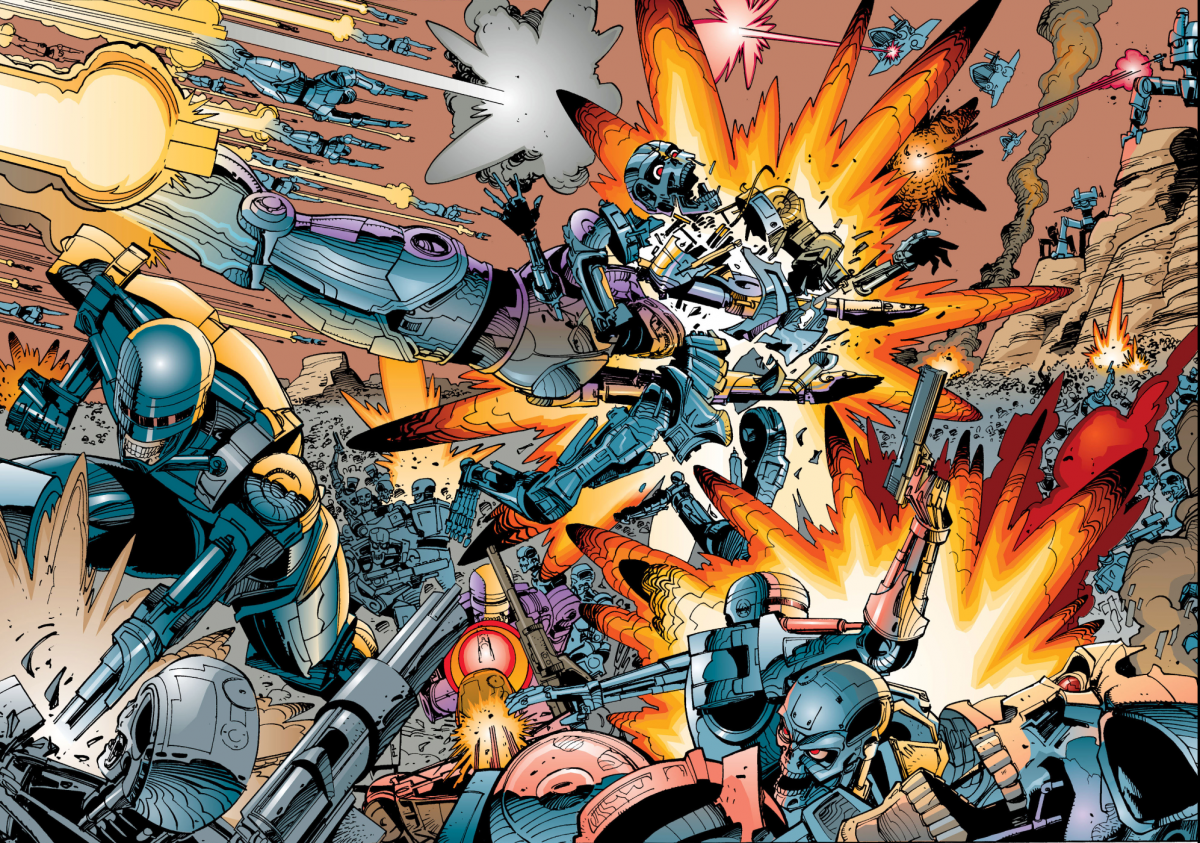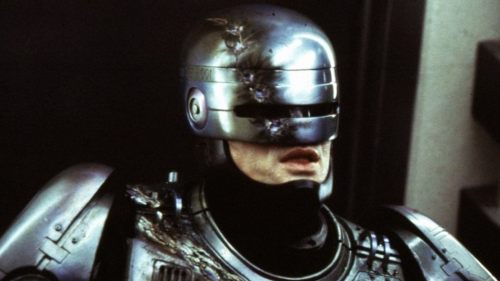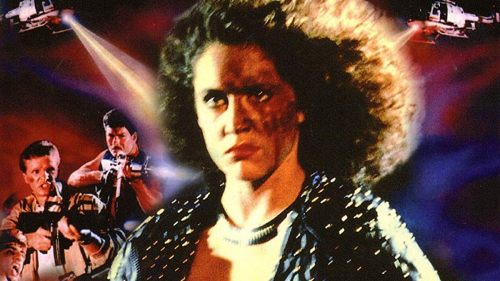Revisiting ROBOCOP VERSUS THE TERMINATOR
Terminator: Dark Fate is almost here (get your tickets now!). I’m glad to hear that it’s been getting fairly solid reviews (including one from BMD’s own Michael Gingold), and I’m looking forward to catching it myself. In the meantime, though, Dark Fate’s got me thinking about one of the stranger bright spots in the Terminator series’ long and uneven history – the 1992 comic miniseries RoboCop versus the Terminator. Drawn by Walt Simonson (whose 1983-1987 Thor run was a major influence on Taika Waititi’s Thor: Ragnarok) and written by a pre-bigoted-putzery Frank Miller, RoboCop versus the Terminator is a damn well-made comic.

Whether pondering his existence in the rain or engaged in a pitched, limb-rending duel with a Terminator endoskeleton, Simonson’s RoboCop is powerful and stalwart, a consistently heroic, even visually comforting presence. Simonson’s Terminators, by contrast, are well and truly horrifying. Their human disguises channel the callous indifference of Arnold Schwarzenegger’s first T-800 and Robert Patrick’s T-1000, and their skeletal forms may be Simonson’s best work in the book. He bestows them with a huge range of body language, remarkably expressive for their famously stone-faced design. In near-future Detroit, a single Terminator fights like a wild animal in hand-to-hand battle with RoboCop – clawing and crawling for any advantage. In the blasted hellscape that is post-Judgment Day Earth, an army of heavily armed Terminators marches in ground-shaking lockstep, SkyNet’s confidence in humanity’s annihilation made manifest.
The worlds these mighty foes inhabit is similarly striking. Detroit is chaotic, crowded, and boldly alive. The post-Judgment Day wasteland is sickeningly empty, a world murdered and rendered barren by a being that finds beauty in the absence of color, of life. And, though seen only sparingly, the digital world – home to SkyNet and the place where what remains of Alex Murphy feels closest to human – is rendered by Simonson as a place of constant and infinite motion, a place where visual surrealism is the rule rather than the exception.

Miller’s script is wonderfully tense. In classic Terminator spirit, the basic plot is a chase. A human resistance fighter named Flo wants to destroy RoboCop so that he can never be plugged into SkyNet – the incident in this tale that enabled the malignant AI to become sentient. SkyNet wants to terminate Flo and ensure its own awakening, either by convincing or forcing RoboCop to do so. RoboCop wants to protect humanity, even if that means his own destruction. But where Terminator and T2 restrict time travel to their stories’ openings, Miller uses it as a key tool in his storytelling. When Flo successfully kills RoboCop, SkyNet’s future begins to physically unravel around it. With seconds to spare, it sends a squadron of Terminators back to a point where they can stop her – which they do.
In each new timeline, the reader sees familiar events take sharp, sudden turns in new directions, enabling Miller to use a favorite technique: the repetition of specific dialogue to emphasize the story’s stakes and scale. In one reality, RoboCop hacks a government database and learns that he could very well usher in the apocalypse. The narration reads, “Humanity will be destroyed. And he is the cause of it all.” In another timeline, SkyNet forcibly links RoboCop to its pre-sapient self, and successfully brings about Judgment Day. The new narration reads “Armageddon. And he is the cause of it all. Terminators stalk the survivors, tireless, merciless. And he is the cause of it all.” This repetition, of both events and dialogue, gives RoboCop versus the Terminator a forward-driving rhythm that stays steady even as its content gets wilder and wilder.
And wild it gets. Simonson and Miller’s comic feels like both a RoboCop story and a Terminator story – not something easily accomplished. The segments set in Detroit possess a bleak, absurd sense of humor. RoboCop nonchalantly hurls an angry white guy wannabe suicide bomber into the sky, where he explodes harmlessly. The ED-209s, try as they can to be helpful, prove so thoroughly hapless that they manage to exasperate RoboCop at a moment when he’s feeling particularly detached from his humanity. Even the utter cold-bloodedness of the Terminators gets a laugh – an entire basketball stadium pulling guns on them upon their arrival proves more of a convenience than a challenge.
The post-Judgment Day segments, by contrast, would fit right in with Kyle Reese’s traumatized flashbacks and Sarah Connor’s nuclear nightmare. People die badly, and behind the apathetic glower of its Terminators’ skulls, SkyNet relishes their demise. At the story’s start, the surviving members of humanity can be counted on one hand (while John Connor is mentioned in passing, RoboCop and Flo take the place of him and his parents within the Terminator narrative). When RoboCop’s ghost/program/soul manages to seize control of a Terminator factory and build himself a new body, Simonson and Miller bring the two tones clashing together, with space for both epic widescreen action and an intimate confrontation between hero and villain.

RoboCop versus the Terminator’s craft is impeccable. It moves with precision and features several gloriously all-caps COMICS moments, like the special sort of joy in seeing RoboCop brandishing the decapitated skull of a Terminator. It honors the cores of the movies that inspired it even as it builds its own story from their elements. Put simply, it’s a darn good comic. One well worth seeking out.




